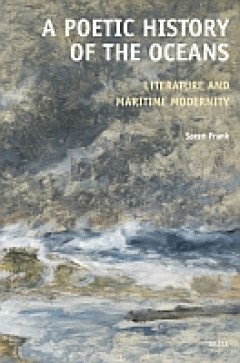Ditapis dengan
E-book Rural Granaries in Northern Gaul (Sixth Century BCE – Fourth Century…
Compared with other pre-industrial societies, a rather high percentage of the Roman population in the Gallic and Germanic provinces was not involved in agrarian production during the High Empire. Rural produce was needed to feed soldiers and the inhabitants of vici, small towns and cities. To maintain this system the Gallo-Roman villae – the rural settlements whose…
- Edisi
- Vol. 8
- ISBN/ISSN
- 9789004389045
- Deskripsi Fisik
- 195 hlm
- Judul Seri
- -
- No. Panggil
- 930 MAR r
E-book Building the Countryside : Rural Architecture and Settlement in the Tr…
he region of Tripolitania is well-known for its spec-tacular Roman-period architecture in both city and country. The enormous and elaborate temples, baths, basilicae and other public buildings of the coastal cit-ies of Lepcis Magna, Sabratha and others, have, not undeservedly, captured the attention and imagina-tion of travellers and scholars alik…
- Edisi
- -
- ISBN/ISSN
- 9781900971782
- Deskripsi Fisik
- 433 hlm
- Judul Seri
- -
- No. Panggil
- 930 SHE b
E-book Roman Women’s Dress : Literary Sources, Terminology, and Historical …
No man ever steps in the same river twice.”¹Heraclitus’ riddling remark about identityalso applies to Roman (dress) culture. Fortunately, the puzzling contradiction dependson words and not on objects. If we define the term ‘Roman dress culture’ in the broadestsense, it includes all the garments which Roman people (if we also allow for a broaddefinition of the term ‘Roman’) wore fro…
- Edisi
- -
- ISBN/ISSN
- 9783110711554
- Deskripsi Fisik
- 807 hlm
- Judul Seri
- -
- No. Panggil
- 930 RAD r

E-Book A Poetic History of the Oceans: Literature and Maritime Modernity
What is the ocean’s role in human and planetary history? How have writers, sailors, painters, scientists, historians, and philosophers from across time and space poetically envisioned the oceans and depicted human entanglements with the sea? In order to answer these questions, Søren Frank covers an impressive range of material in A Poetic History of the Oceans: Greek, Roman and Biblical text…
- Edisi
- -
- ISBN/ISSN
- 9789004426702
- Deskripsi Fisik
- 466 halaman
- Judul Seri
- -
- No. Panggil
- 930 FRA a

E-Book City of Caesar, City of God: Constantinople and Jerusalem in Late Anti…
This volume explores the entangled history of Constantinople and Jerusalem in Late Antiquity. The two cities were powerful symbols of Empire and Church, interconnected and interdependent in multiple ways. Covering the transition between Antiquity, Byzantium, and the Middle Ages, distinguished international scholars investigate art, ceremony, religion, ideology, and imperial rule in these vibran…
- Edisi
- -
- ISBN/ISSN
- 9783110718447
- Deskripsi Fisik
- 349 halaman
- Judul Seri
- -
- No. Panggil
- 930 KLE c
E-book The Saqqara Necropolis through the New Kingdom : Biography of an Ancie…
The city’s eminent position in the New Kingdom affected the nature of itsdesert-edge necropolis. The latter’s prominence is underlined by the fact thatsome of the kingdom’s most influential priestly, administrative, military, andcourtofficialschosetoconstructtheirtombs11inthisculturallandscapewhich,atthetime,wasalreadyancient.Italsousedtobeaverylivelyplace,onewhereancient people worked, l…
- Edisi
- -
- ISBN/ISSN
- 9789004467149
- Deskripsi Fisik
- 560 hlm
- Judul Seri
- -
- No. Panggil
- 930 STA t
E-book The Return of the Buddha : Ancient Symbols for a New Nation
The popular English daily TheHindu carried a news item in its Friday Review on September 10, 2011 under the title ‘Kapilavastu Relics to be displayed in Sri Lanka’. The article referred to the unearthing of the relics at Piprahwa in the present Indian state of Bihar by Major General (retired) Alexander Cunningham (1814–93), the first head of the Archaeological Survey …
- Edisi
- -
- ISBN/ISSN
- 9780415711159
- Deskripsi Fisik
- 313 hlm
- Judul Seri
- -
- No. Panggil
- 930 RAY t
 Karya Umum
Karya Umum  Filsafat
Filsafat  Agama
Agama  Ilmu-ilmu Sosial
Ilmu-ilmu Sosial  Bahasa
Bahasa  Ilmu-ilmu Murni
Ilmu-ilmu Murni  Ilmu-ilmu Terapan
Ilmu-ilmu Terapan  Kesenian, Hiburan, dan Olahraga
Kesenian, Hiburan, dan Olahraga  Kesusastraan
Kesusastraan  Geografi dan Sejarah
Geografi dan Sejarah